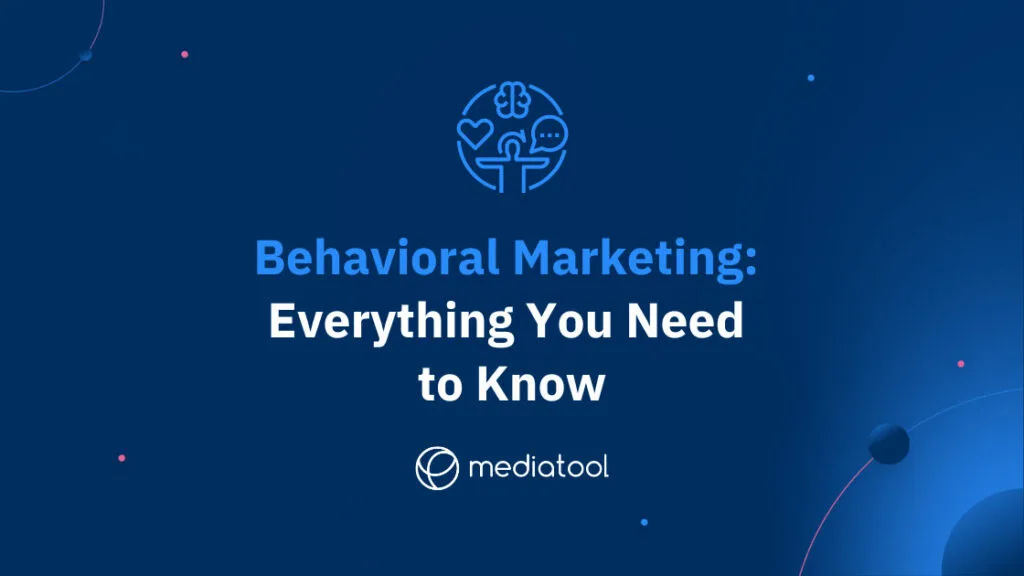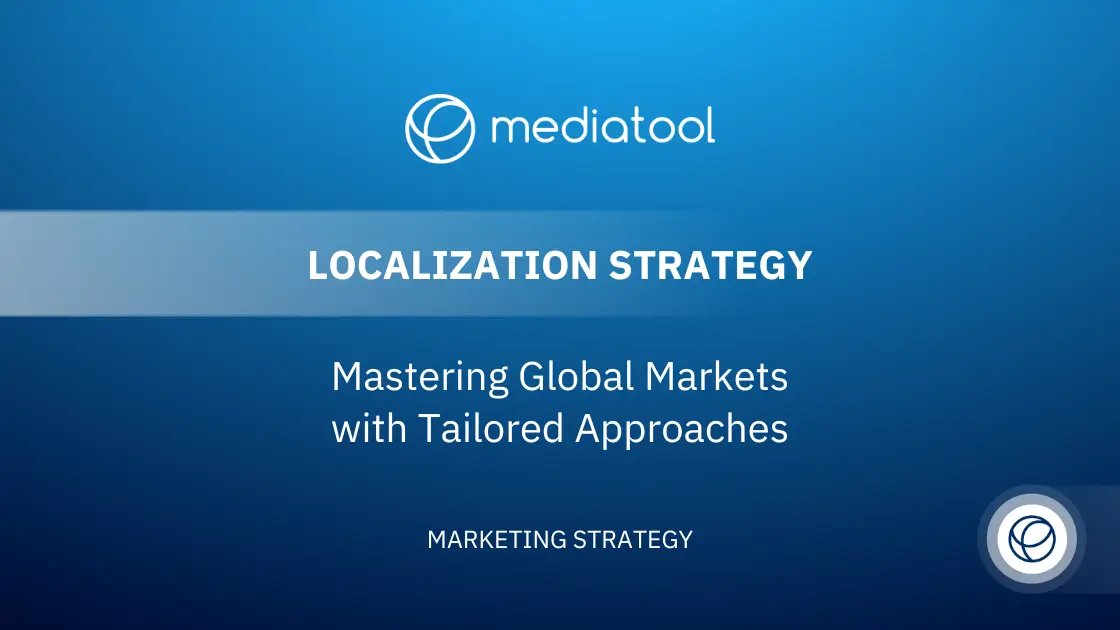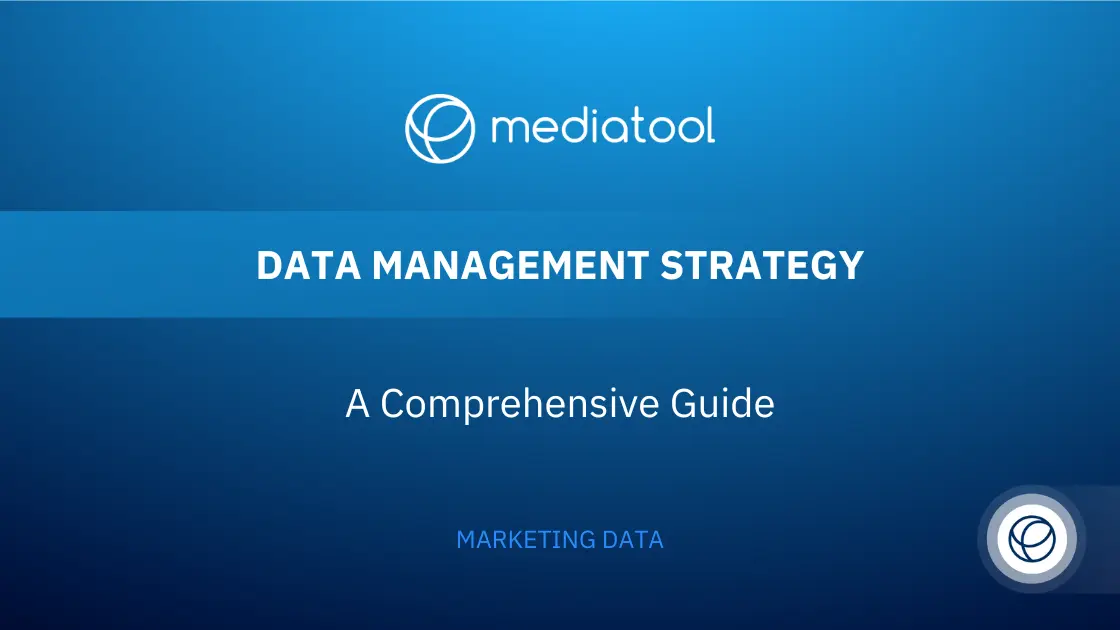Do you ever wonder why you see ads for products and services that seem to match your interest and recent thoughts? It’s not a coincidence; it’s the result of behavioral marketing.
This approach involves analyzing your online behavior and preferences to tailor ads specifically to you. The precision of these targeted ads can be quite astonishing, giving the impression that the apps know what you’re thinking. But there’s no magic or mind-reading involved; it’s simply a matter of using data about your behavior to create more relevant advertising experiences.
Behavioral marketing is an innovative approach to advertising that studies a customer’s online behavior to deliver personalized messages and offers relevant recommendations based on their interests. From targeting potential customers through behaviorally driven campaigns, behavioral marketing has become an increasingly important aspect of any successful modern digital marketing strategy.
Rather than focusing on a generic, mass-market approach to selling, businesses use behavioral marketing to identify consumers based on their interest in the company’s offerings. Around 47% of companies personalize communications based on real-time customer behavior to improve marketing effectiveness.
This guide will provide a comprehensive overview of behavioral marketing, detailing the different campaigns and tools used and the benefits of leveraging behavioral marketing in any digital strategy.
So, let’s explore the fascinating world of behavioral marketing.
What is Behavioral Marketing?
Understanding Behavioral Marketing
Behavioral marketing, a pivotal marketing strategy, utilizes the analysis of customer online behavior to deliver specifically tailored content.
Enhancing Engagement with Behavioral Insights: This approach allows marketers to fine-tune their engagement strategies by responding to the dynamic preferences and behaviors of their audience in real-time.
Personalization Through Data
It harnesses consumer data and behavioral data to provide an unprecedented level of personalization in marketing efforts, transcending the capabilities of traditional advertising.
Leveraging Advanced Analytics: Advanced data analytics tools play a crucial role in dissecting vast amounts of behavioral data, enabling more precise personalization.
Analyzing Customer Activities
In behavioral marketing, marketers scrutinize various customer activities—like search history, online shopping behavior, page views, and content interactions.
Responsive Marketing Actions: This constant monitoring helps marketers to respond proactively to emerging trends and preferences among their target audience.
Gaining Insights for Effective Campaigns
This exploration of online behavior yields critical insights for devising highly effective marketing campaigns and behavioral marketing tactics. Businesses can uncover customer behavior patterns, enabling them to tailor their approach and create more compelling and relevant content.
Refining Marketing Messages: Insights from behavioral analysis empower businesses to refine their marketing messages for increased relevance and impact.
Boosting Conversion Rates and Fostering Loyalty
This marketing approach significantly boosts conversion rates and fosters customer loyalty, as it aligns offers and content with the genuine interests of the target audience.
Enhancing Customer Journey: Tailored marketing initiatives also contribute to a smoother and more satisfying customer journey, strengthening the overall brand relationship.
Consumer Preference for Personalization
The personalized nature of these targeted ads and product suggestions ensures better engagement with minimal effort in capturing attention. Notably, about 71% of consumers express a preference for interest-based ads and show irritation towards non-personalized ads.
Respecting Privacy Concerns: Amid growing privacy concerns, it’s essential for marketers to balance personalization with respect for customer privacy.
Multi-Channel Application
Far from being channel-specific, behavioral marketing finds its application across diverse digital marketing channels.
Engaging Diverse Audiences
Companies leverage this strategy in varied arenas such as their websites, email marketing campaigns, social media platforms, and even through google ads, making it a comprehensive tool for engaging with both current customers and potential customers.
The Power of Personalized Experience
Its effectiveness lies in delivering a personalized experience, transforming how companies interact with their audience and ultimately driving sales.
Behavioral Marketing Strategy Components: Targeting, Segmentation, and Personalization
Behavioral marketing revolves around three core components: targeting, segmentation, and personalization, each playing a crucial role in a comprehensive marketing strategy.
Targeting:
Behavioral targeting represents a paradigm shift in marketing, focusing on pinpointing customers inclined towards specific products and services.
Unlike traditional contextual targeting that depends on a website’s or app’s context, behavioral targeting leverages consumer behavior data, including search history and online behavior, to disseminate relevant targeted ads at opportune moments.
This approach enhances interaction with ads, streamlining the process for marketers to effectively reach their target audience.
Behavioral Segmentation:
Segmentation in behavioral marketing entails dividing customers into distinct groups based on diverse criteria, allowing for the creation of tailored marketing campaigns for each segment.
This division can be based on multiple factors, such as purchase behavior, user engagement levels, customer journey stages, and even loyalty.
By employing behavioral data and customer behavior data, businesses can better understand their target customers, providing a more personalized marketing experience.
Personalization:
Personalization is about delivering content that aligns perfectly with individual customer needs and interests, driven by insights from customer data and purchase history. This tactic has significantly enhanced user engagement on platforms like Amazon and YouTube.
Personalization considers factors like location, past purchases, and search engines used, enabling the delivery of highly relevant messages and product suggestions.
These behavioral marketing tactics utilize digital marketing channels and marketing automation to maximize their impact.
By implementing these strategies, marketers can use google analytics and web analytics to gain valuable insights, ultimately leading to increased sales, enhanced customer retention, and the ability to create campaigns that resonate deeply with their audience.
Additionally, this approach enables effective cross-selling by understanding past interactions and preferences, making it a powerful tool for reaching both current customers and potential customers.
Types of Behavioral Marketing
Depending on the customer’s online behavior, marketers can use different types of behavioral marketing.
Retargeting

Retargeting is a form of advertising that helps marketers target customers who have already visited their website or app.
This technique helps to remind customers about their purchase or engage them with other offers if they have abandoned their shopping cart.
For example, if a customer is browsing for laptops on an e-commerce website and leaves without purchasing, the site can serve ads about the laptops they’re interested in.
Social media retargeting is also a great way to target customers interacting with your brand on social channels. By displaying personalized content to these customers, companies can increase their chances of making a purchase.
Email marketing
Email marketing is another powerful tool marketers can use to deliver customized customer messages. Companies can identify customers who have opened the emails, clicked on the links, and even used a particular coupon code to send them personalized follow-up emails.
For example, if a customer opens an email about a new product launch, the company can send a customized message to that customer with more information about the product.
By using data points like past purchases, customers’ locations, and browsing history, companies can create segmented lists to send them relevant offers to increase their chances of purchasing.
This helps to build trust with customers and increases engagement with the brand.
Product suggestions
Product suggestions are a great way to engage customers by recommending products they may find interesting. By understanding their online behavior, marketers can display relevant product recommendations to customers on their website or app.
For example, websites can suggest products like accessories, software, and other related items for customers who have already purchased a laptop.
These recommendations aim to make customers’ shopping experiences more personalized and increase the chances of making a purchase.
y displaying relevant product suggestions, companies can also create opportunities for cross-selling and up-selling to their customers.
Demographic targeting
Demographic targeting allows businesses to target specific groups of customers with tailored content. Companies can use data points like age, location, gender, and other demographics to create targeted campaigns for those customers.
For example, a company may want to target teenage girls with an ad about their new makeup line. By using demographic targeting, the company can ensure that the ad serves customers in that age group.
With the right data, companies can create more effective campaigns with higher conversion rates.
Best Behavioral Marketing Examples
Behavioral marketing has become an integral part of digital marketing. Here are some top examples that showcase the power of this technique.
Amazon
Amazon is an excellent example of how marketers can use behavioral marketing to improve the user experience. The e-commerce giant uses data collection points like customers’ purchase history, browsing behavior, and location to create personalized product recommendations for each visitor. This helps Amazon to increase its average order value, improve buyer’s experience, and generate more sales.
Amazon also employs behavioral targeting for advertising on multiple channels. By collecting data on user behavior on its platform, Amazon customizes ads shown to the same users on other websites and social media platforms.
This method of retargeting not only brings back potential customers to Amazon’s website but also helps the sales team to understand customer preferences better.
The company’s advantage lies in its ability to automatically segment its audience based on behavior, leading to highly targeted ad offerings.
Netflix
Netflix is another example of how companies can use behavioral marketing to engage customers. Understanding their viewing behavior lets Netflix recommend the right content for each customer. This helps Netflix increase engagement, retain viewers, and boost its revenue.
In addition to content recommendations, Netflix uses behavioral data to tailor its email marketing campaigns.
By analyzing viewers’ interactions with their emails, Netflix customizes the subject lines and content of follow-up messages. This results in a more personalized experience for viewers, encouraging them to return to the platform.
This strategy of targeting customers based on their viewing history and interactions has been pivotal in Netflix’s success in retaining a diverse and global audience.
Airbnb
Another great example of how marketers can use behavioral marketing to target customers is Airbnb. Airbnb uses data points like customers’ location, past bookings, and travel preferences to suggest suitable listings for each customer.
This helps them to deliver an improved user experience and increase conversion rates.
Airbnb’s use of behavioral marketing extends beyond just suggesting listings. They also analyze the site’s users’ behavior to create targeted retargeting ads.
This ensures that potential customers who visited the site but didn’t book are reminded of the listings they viewed.
By collecting feedback and analyzing data on customer visits, Airbnb continuously refines its marketing strategy, providing a competitive advantage in the digital advertising space.
Best Buy
Like Amazon, Best Buy monitors customers’ browsing behavior and purchase history to suggest relevant products. They also checked their abandoned cart items to send personalized follow-up emails to customers, which helped them increase sales.
Best Buy’s approach to behavioral marketing also involves sending targeted ads to site visitors based on their browsing history.
This method helps in reaching out to new site visitors and those who have shown interest in specific products but haven’t made a purchase.
By collecting data on consumer behavior patterns, Best Buy creates ads that resonate more with their target audience, leading to increased sales and customer loyalty.
YouTube
By understanding their viewers’ preferences and past watch history, YouTube suggests relevant videos for each user, which helps them increase engagement. The more videos the user watches, the more advertisements they go through. This results in increased ad revenues for YouTube and better sales for businesses.
YouTube’s behavioral marketing strategy is not just limited to video recommendations. They also use behavioral patterns and search history to place relevant ads before, during, and after videos.
This approach of targeting customers based on their online behavior helps in serving ads that are more likely to be of interest to the viewer. By leveraging data from google search and other behavioral data points, YouTube effectively segments its users, offering a more personalized ad experience.
The Result
In each of these cases, companies collect and analyze behavioral data, use digital marketing channels and tools like marketing automation, and employ audience segmentation to target customers with personalized content. This approach allows them to create more relevant and effective marketing campaigns, tailored ads, and product suggestions, leading to improved customer retention, increased sales, and valuable insights into customer behavior and preferences. Through such strategic marketing efforts, these companies demonstrate the power of behavioral marketing in reaching and engaging with their target audience effectively.
Incorporating Behavioral Marketing into your Marketing Strategy
Behavioral marketing is a powerful tool that helps marketers understand their customers better and deliver tailored messages to them. However, using consumer data responsibly and modestly is essential to avoid appearing too intrusive. That’s where Mediatool, a platform for marketing and e-commerce professionals, can help.
With Mediatool’s powerful platform, marketers can plan, create, analyze, and optimize their campaigns in one place. This helps them to get the most out of their data, target the right customers with relevant messages, and increase their sales and ROI.
So, if you want to take your marketing strategy to the next level, Mediatool is the perfect tool. Book a tour of Mediatool today.




